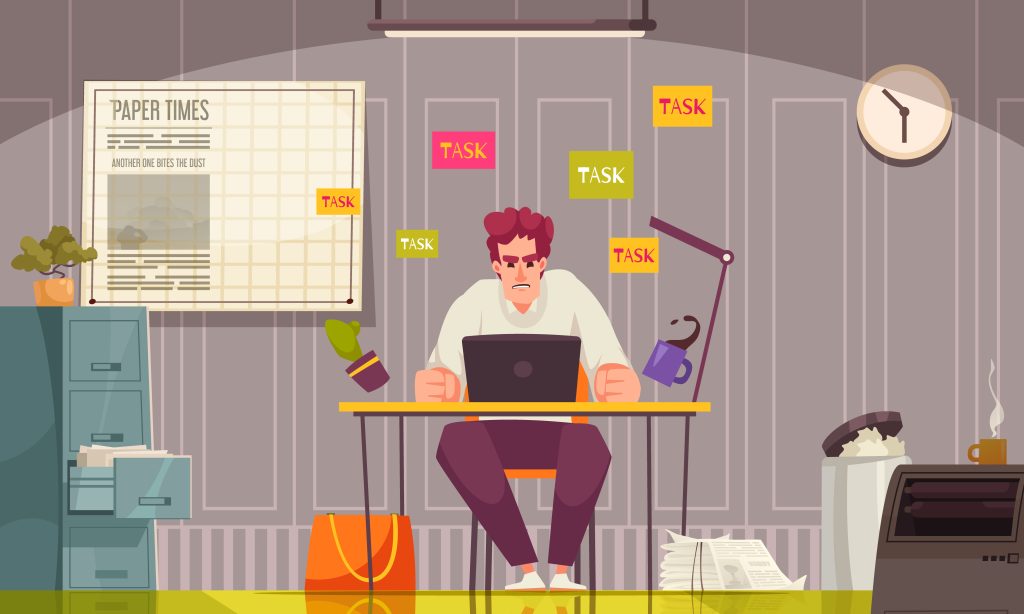Ever think you’re getting more done by juggling multiple tasks at once? While the illusion of efficiency might feel satisfying, research shows that why multitasking feels productive but isn’t runs deeper than distraction—it deals with how our brains handle focus and control.
In many personal and professional settings, multitasking is celebrated. But mounting evidence from neuroscience and psychology points in another direction. By understanding why multitasking feels productive but isn’t, you can design routines that support focus, well-being, and real productivity—without sacrificing results.

1. The Brain’s Switch Costs
When you jump between tasks, your brain must reorient and reload context each time—this delay is called a “switch cost.” Studies show this reduces productivity significantly. The American Psychological Association notes even minor task-switching can slow progress. Reports from productivity platforms find a 20–40% reduction in output with multitasking.
2. Hidden Toll on Mental Health
Beyond efficiency, multitasking takes an emotional toll. Neuroimaging research shows rapid task-switching triggers stress responses in the brain. Other studies link multitasking with higher cortisol levels, increased anxiety, mood disturbances, and signs of cognitive overload. The mental fatigue from constant switching contradicts the sense of being productive.
3. Cognitive Bottlenecks and Distractions
Noise, notifications, and overlapping demands fragment attention. Studies at leading universities find frequent task-switchers struggle to maintain focus. Rather than completing more, multitaskers finish less and take longer. Realizing why multitasking feels productive but isn’t lets you design time and environments that support sustained attention.
4. Can Multitasking Ever Work?
Not all multitasking is bad. Pairing a physical activity—like walking—with a simple mental task—such as listening to an audiobook—can be effective. This is sometimes referred to as “mindful multitasking” and suits low-attention demand tasks. But combining two demanding mental tasks still compromises efficiency and quality.
5. Guide: How to Escape Multitasking and Boost Focus
These practical strategies will help you move from feeling busy to being genuinely effective:
-
Monotask with Pomodoro Blocks
Focus on one task for 25 minutes, then take a 5-minute pause. Repeat this cycle to stay sharp and structured. -
Batch Similar Tasks
Group related tasks (like replying to all emails) instead of switching topics frequently. -
Silence Non-Essential Notifications
Turn off or mute apps that pull your attention away. -
Use Entry Rituals
Begin work blocks with a routine—close tabs, silence phones, open the right files—so your brain knows it’s focus time. -
Include Thoughtful Multitasking
During physical activity, listening to informative content can be both restorative and productive. -
Track Yourself
Review how you spend time and how you feel afterward to refine habits and stay on track.
6. The Future of Attention in Daily Life
Wellness trends and workplace design are shifting toward attention management—not just time management. Tech tools now offer modes that mute distractions during deep work. Teams are adopting meeting-free time blocks. This reflects a broader acknowledgement: multitasking feels productive but isn’t, and managing focus is the real key to performance.
Summary Table
| Strategy | Effect |
|---|---|
| Monotasking/Pomodoro | Boosts deep focus |
| Task batching | Cuts context-switching time |
| Notification silencing | Reduces distraction |
| Physical + simple tasks | Balances energy and task completion |
| Rituals and tracking | Signals focus and supports reflection |
Conclusion
The allure of multitasking lies in its appearance of efficiency—but why multitasking feels productive but isn’t comes down to hidden costs: diminished focus, increased stress, and less effective work. Choosing focus, not busyness, yields more meaningful progress and mental space. By applying monotasking strategies, scheduling, and mindful attention, you reclaim your sense of productivity—for real results and deeper satisfaction.
References
- American Psychological Association. Multitasking: Switching costs. Available at: https://www.apa.org/topics/research/multitasking (Accessed June 2025).
- Verywell Mind (2024). How Multitasking Affects Productivity and Brain Health. Available at: https://www.verywellmind.com/multitasking-2795003 (Accessed June 2025).
- Asana (2025). Multitasking Doesn’t Work—Here’s What Does. Available at: https://asana.com/resources/multitasking (Accessed June 2025).









